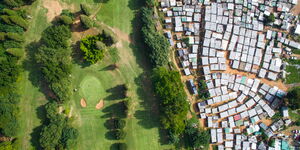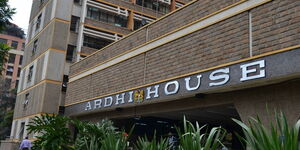Agriculture, forestry, and fishing sectors were the biggest drivers of Kenya’s economy in the first quarter of 2025, according to new data released by the Kenya National Bureau of Statistics (KNBS).
The three sectors recorded a growth of 6.0 per cent, up from 5.6 per cent in the same period last year, buoyed by favourable weather conditions across major agricultural zones.
The improved performance was evident in the increase in agricultural production in a number of subsectors during the review quarter, owing to favourable weather conditions.
''The quantity of milk deliveries to processors increased from 218.8 million litres in the first quarter of 2024 to 250.6 million litres in the period under review. Similarly, coffee exports increased from 9,722.3 metric tonnes in the first quarter of 2024 to 16,894.4 metric tonnes in the corresponding quarter of 2025," read part of the report by KNBS.
Other key sectors that contributed significantly to the Gross Domestic Product (GDP) growth include Information and communication (5.8 per cent), wholesale and retail trade (5.4 per cent), real estate (5.3 per cent), and financial and insurance activities (5.1 per cent).
Public administration registered an even stronger growth at 6.5 per cent, reflecting increased government spending and public service activities.
Kenya’s overall economy grew by 4.9 per cent in Q1 2025, maintaining the same pace as Q1 2024. All sectors recorded positive growth during the quarter, though at varying rates. The broad-based recovery indicated resilience in multiple areas of the economy amid ongoing local and global uncertainties.
Professional, administrative, and support services grew by 4.6 per cent, supported by increased demand for outsourced business services and professional consulting.
The transport and storage sector posted a 3.8 per cent growth, boosted by increased logistical activity and freight movement.
Mining and quarrying rebounded strongly, recording a 10 per cent growth after a sluggish performance in previous quarters.
The rebound was linked to increased demand for minerals both locally and internationally, as well as the resumption of stalled extraction projects. Construction also grew by 3.0 per cent during the quarter.
On the downside, the accommodation and food services sector posted a significant slowdown, growing by just 4.1 per cent compared to a sharp 38.1 per cent increase in Q1 2024. The deceleration was partly attributed to a decline in international tourist arrivals and a tightening of household spending on non-essential services.
Despite the mixed sectoral performance, the overall economic outlook remains positive. The data points to a continued recovery trend supported by strong performances in agriculture, services, and manufacturing, even as some sectors, such as tourism, faced headwinds.












